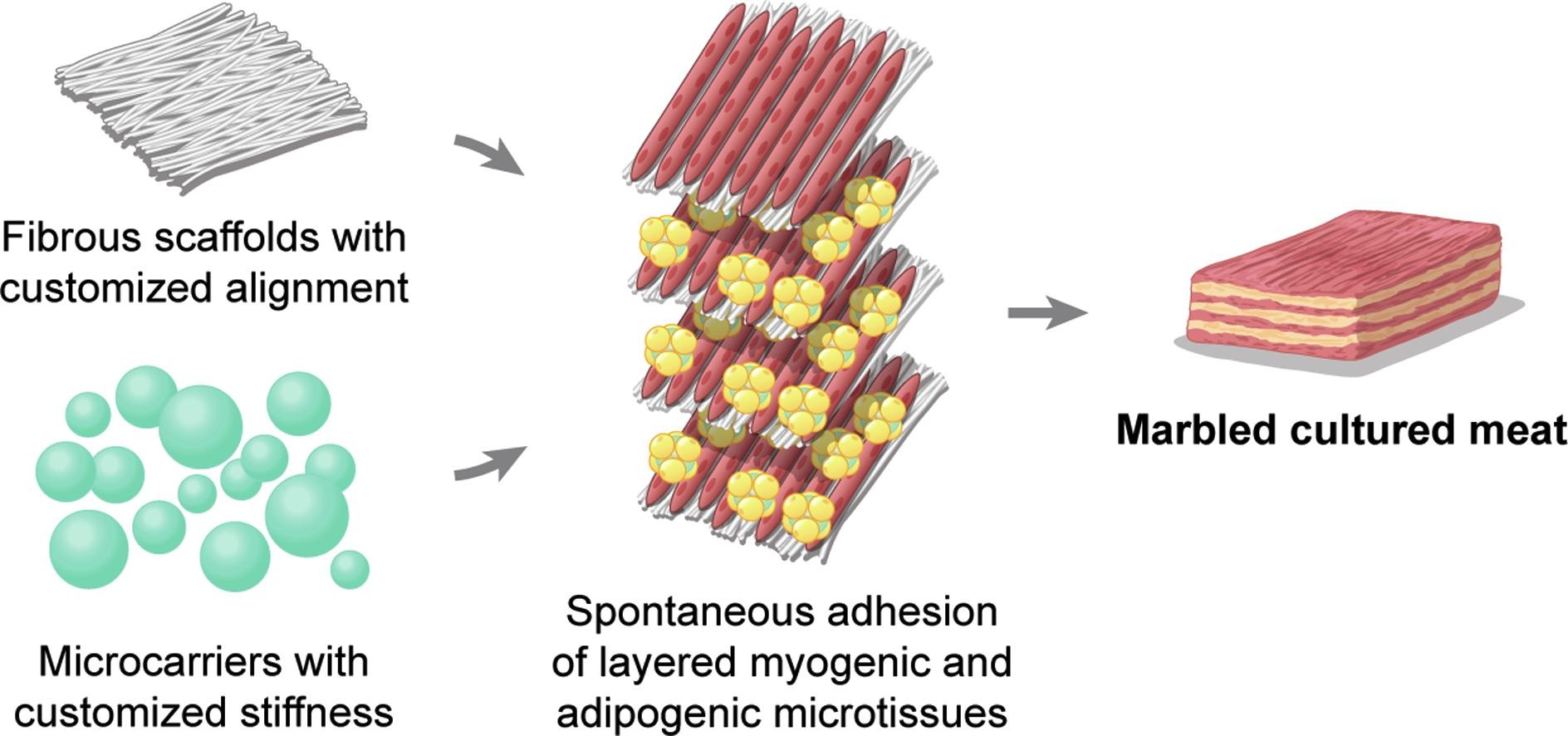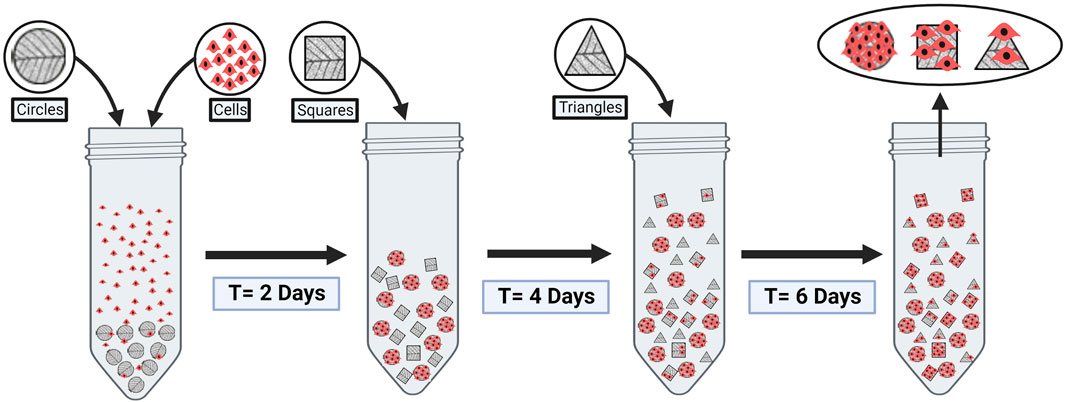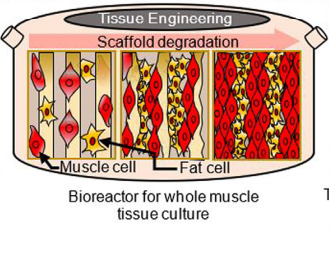- Overview
- Summary
- Funding
- Cite This Publication
Overview
Who: Irfan Tahir, Rachael Floreani
Published: September 13, 2022
Where: Foods
Key Takeaway: Alginate-based scaffold systems can be tuned to ideal parameters for cultured meat production.
Research Topics:
Summary
Irfan Tahir & Rachael Floreani examine the feasibility of alginate-based hydrogels as cultured meat scaffolds. They first synthesize alginate and methacrylated alginate scaffolds via ionic, visible-light, and dual crosslinking. These scaffolds are then assessed on their material properties and ability to support mouse myoblast cell growth. Tahir & Floreani find dual crosslinking can significantly increase the compressive modulus of the scaffold, yet does not impair the overall porous structure or other physical properties of the scaffold. They argue this demonstrates this scaffold system may be tuned to individual cell types and needs. They also find that mouse myoblast cells exhibit highest cell density on lower compressive modulus gels, particularly when the compressive modulus is near the physiological range for muscle tissue. Overall, they conclude this study shows proof-of-concept use of customized alginate scaffolds for cultured meat production.
Written by Morgan Ziegelski
Cite This Publication
Tahir, I., & Floreani, R. (2022). Dual-Crosslinked Alginate-Based Hydrogels with Tunable Mechanical Properties for Cultured Meat. Foods, 11(18). https://doi.org/10.3390/foods11182829
You Might Also Like...

Engineering multicomponent tissue by spontaneous adhesion of myogenic and adipogenic microtissues cultured with customized scaffolds
N. Stephanie Kawecki, Sam C.P. Norris, Yixuan Xu, Yifan Wu, Ashton R. Davis, Ester Fridman, Kathleen K. Chen, Rachelle H. Crosbie, Andrea J. Garmyn, Song Li, Thomas G. Mason, Amy C. Rowat

Repurposing agricultural waste as low-cost cultured meat scaffolds
Luke R. Perreault, Richard Thyden, Jack Kloster, Jordan D. Jones, Jordan Nunes, Andriana A. Patmanidis, David Reddig, Tanja Dominko, Glenn R. Gaudette

Enzymatic degradation and ageing of additively manufactured soy-based scaffolds for cell-cultured meat
A. Garrett, K.L.M. Avegnon, L. Delbreilh, J. Segurola, N. Delpouve, M.P. Sealy



